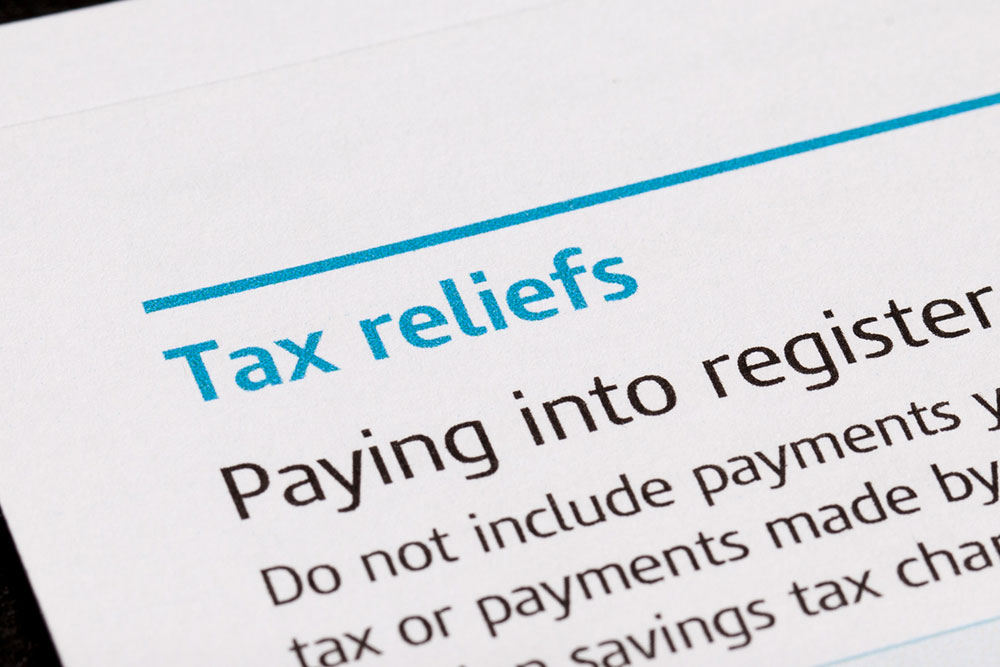Tax Relief – What It Is and Its Types
Although important to the nation, filing taxes often feels like an additional burden on taxpayers. To help reduce this feeling and resolve the problem of tax-related debts, the government runs several tax relief programs, such as tax cuts, targeted programs for certain social groups, or initiatives that align with government goals. Depending on the policy, this relief may present itself as a tax deduction, credit, exclusion, or debt relief.

Types of tax relief
The main aim of tax relief is to help people reduce their tax bills. As people-centric as they may seem, these policies generally stem from governmental goals. For instance, incentive-driven accounts like an IRA or a 401(k) were born out of concern over the lack of retirement savings in the country.
Since every industry and situation is different, the government offers different types of tax relief options, such as the following:
1. Tax deductions
Tax deductions reduce the overall taxable income for the year, thereby bringing down the tax owed. These can be available in a standardized or itemized format on Schedule A of Form 1040 or 1040-SR.
- Standard deduction
The IRS offers a standard deduction amount based on one’s filing status, age, disability, and dependency status. This is a flat deduction from one’s total earned salary, which fluctuates annually. Extra deductions are also available for people over the age of 65 and the legally blind. - Itemized deduction
Sometimes, one could achieve a bigger deduction by itemizing one’s taxes. With this tool, people can subtract specific designated expenses (such as mortgage interest, charitable contributions, unreimbursed medical and dental expenses, state and local taxes, investment interest expenses, etc.) from their taxable income. Note that only one of the two (standard or itemized expenses) can be availed of by oneself at a time. - Other deductions
In addition to the deductions mentioned above, there is also room for other deductions that may be claimed for paying interest on qualifying student loans, educator’s expenses (incurred by the educator for classroom supplies), or Health Savings Account (HSA) deductions for those with a high-deductible health plan.
2. Tax credits
Tax credits are often more lucrative than deductions, as they directly lower the amount of tax owed. For instance, if a person’s total tax bill for the year is around $4000 but is eligible for $1,500 in tax credits, their final tax bill comes down to $2,500. Also known as tax incentives, these credits have become the government’s vehicle to reward certain taxpayer expenses. Popular tax credits include the American Opportunity Tax Credit (AOTC), the Lifetime Learning Credit (LLC), the Earned Income Tax Credit (EITC), the Child Tax Credit, the Saver’s Tax Credit, and the Health Insurance Marketplace premium tax credit.
3. Tax exclusions
Tax exclusions mark certain types of income as non-taxable, helping reduce the taxable income and total tax bill. Payments like child support, life insurance death benefits, employer-sponsored health insurance, and municipal bond income fall under this category.
For citizens who have earned income overseas, other benefits like foreign-earned income exclusion and foreign housing exclusion may also be applicable.
Note that there are significant differences in how these exclusions are recorded. In some cases, they are not recorded as part of one’s income at all, whereas in others, they are recorded in one section and deducted in another.
4. Tax debt relief
With so many things to care for, one may fall behind on taxes. To help people get out of this debt, the IRS also runs a tax relief program called the IRS Fresh Start. This streamlines the collection process and helps people settle their tax debts for less than the total amount owed. This can be availed of as a part of four different programs:
- Offer in compromise
This program is for those who owe mor e money to the IRS than they can reasonably afford to pay at once. As a result, the IRS settles the liabilities for less than the amount owed. When filing for OIC, one must fill out and submit Form 656 (Offer in Compromise), Form 433-A (OIC), Collection Information Statement for Wage Earners and Self-Employed Individuals, and Form 433-B (OIC), Collection Information Statement for Businesses. - Currently Not Collectible (CNC)
Sometimes, the IRS may determine that one’s monthly income is too low to pay the owed taxes reasonably. When this occurs, they halt the debt payment and defer payments to a later date when one is in a better financial position. - Installment agreement
Some people may be allowed to make payments in installments over an extended period of time. This is an installment agreement; additional interest and penalty payments may accompany it. - Penalty abatement
The IRS may even agree to remove certain penalties if reasonable evidence regarding one’s reasons is provided. This could include causes like fire, natural disasters, death, serious illness, incapacitation of the taxpayer or a member of their immediate family, or even an inability to obtain their tax records.
5. Tax relief services
Filing for tax relief can be a cumbersome affair. To make this simpler, many people turn to tax relief services, which claim to work with the IRS and state tax authorities to minimize tax debt. However, many bogus companies are on the market, so be sure to research these offerings well and pick one carefully.


